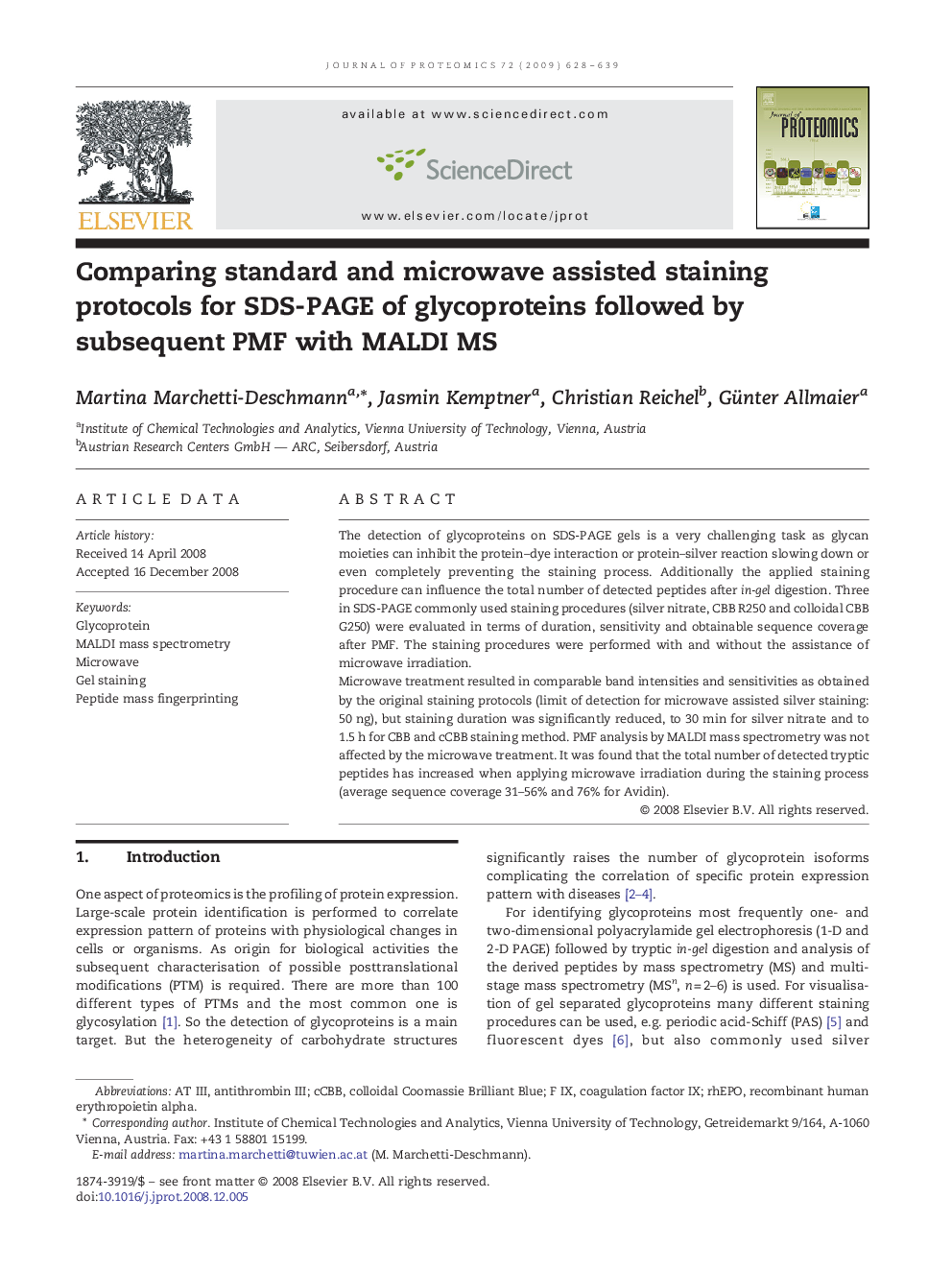| Article ID | Journal | Published Year | Pages | File Type |
|---|---|---|---|---|
| 1225901 | Journal of Proteomics | 2009 | 12 Pages |
The detection of glycoproteins on SDS-PAGE gels is a very challenging task as glycan moieties can inhibit the protein–dye interaction or protein–silver reaction slowing down or even completely preventing the staining process. Additionally the applied staining procedure can influence the total number of detected peptides after in-gel digestion. Three in SDS-PAGE commonly used staining procedures (silver nitrate, CBB R250 and colloidal CBB G250) were evaluated in terms of duration, sensitivity and obtainable sequence coverage after PMF. The staining procedures were performed with and without the assistance of microwave irradiation.Microwave treatment resulted in comparable band intensities and sensitivities as obtained by the original staining protocols (limit of detection for microwave assisted silver staining: 50 ng), but staining duration was significantly reduced, to 30 min for silver nitrate and to 1.5 h for CBB and cCBB staining method. PMF analysis by MALDI mass spectrometry was not affected by the microwave treatment. It was found that the total number of detected tryptic peptides has increased when applying microwave irradiation during the staining process (average sequence coverage 31–56% and 76% for Avidin).
